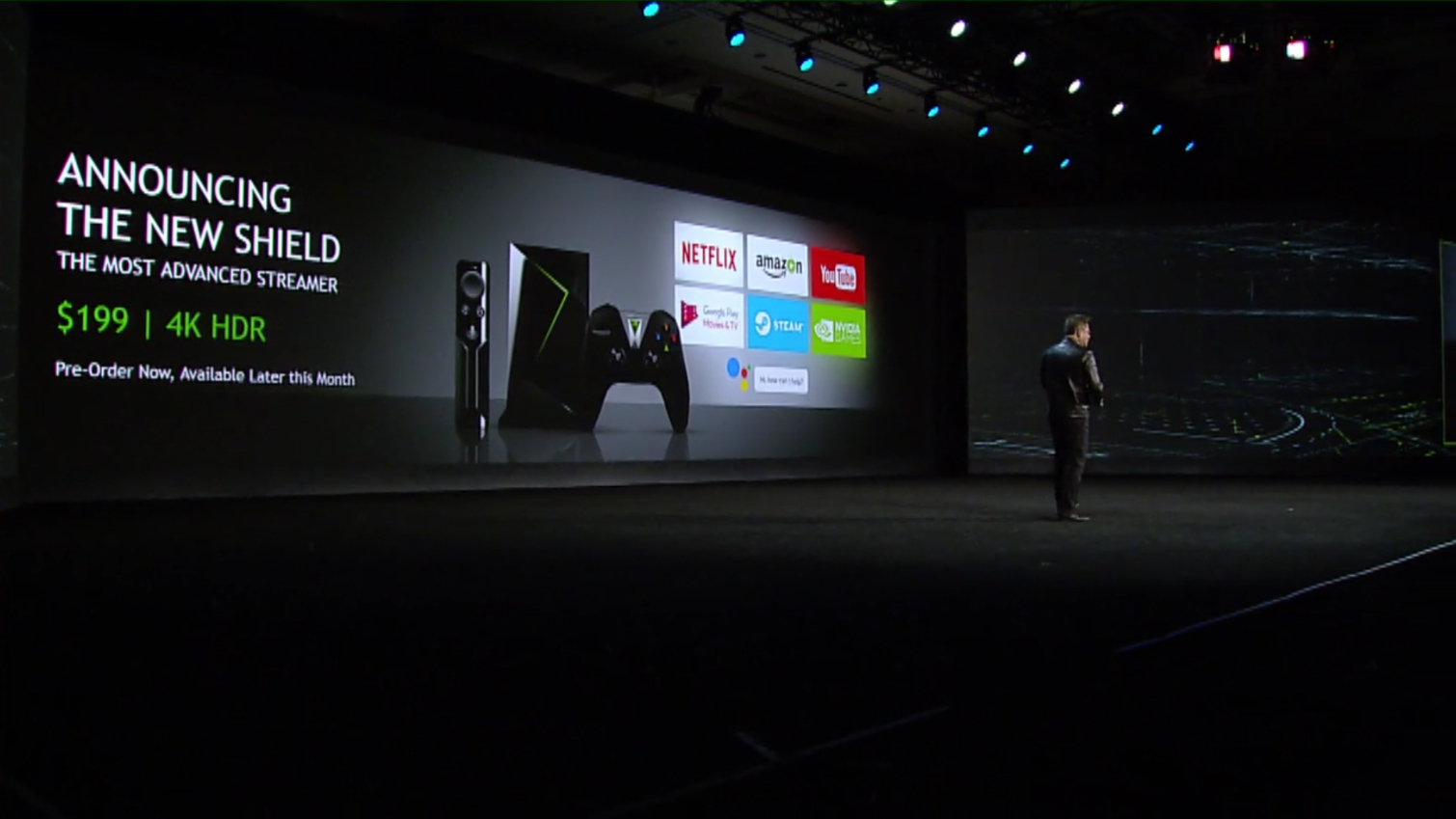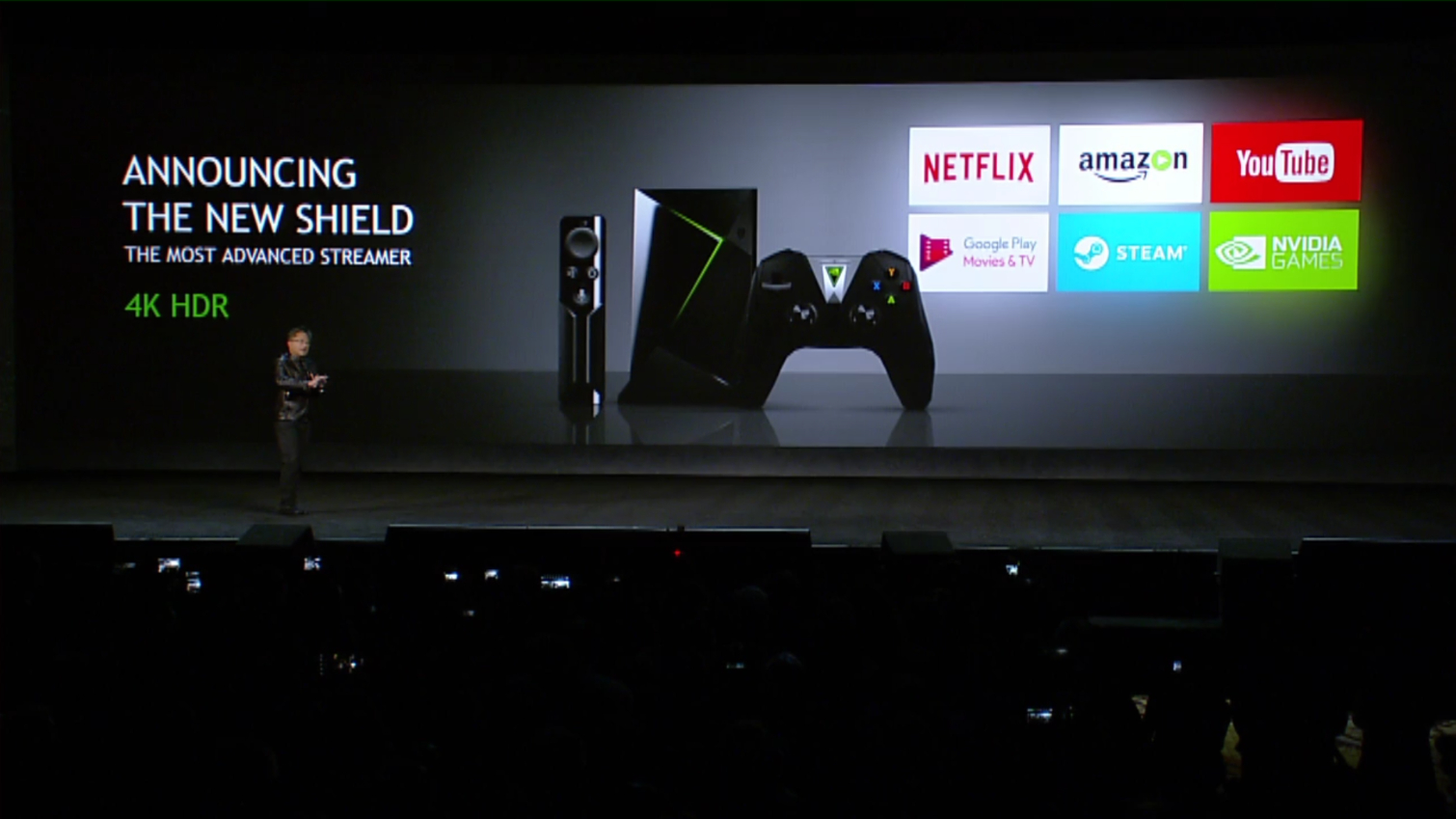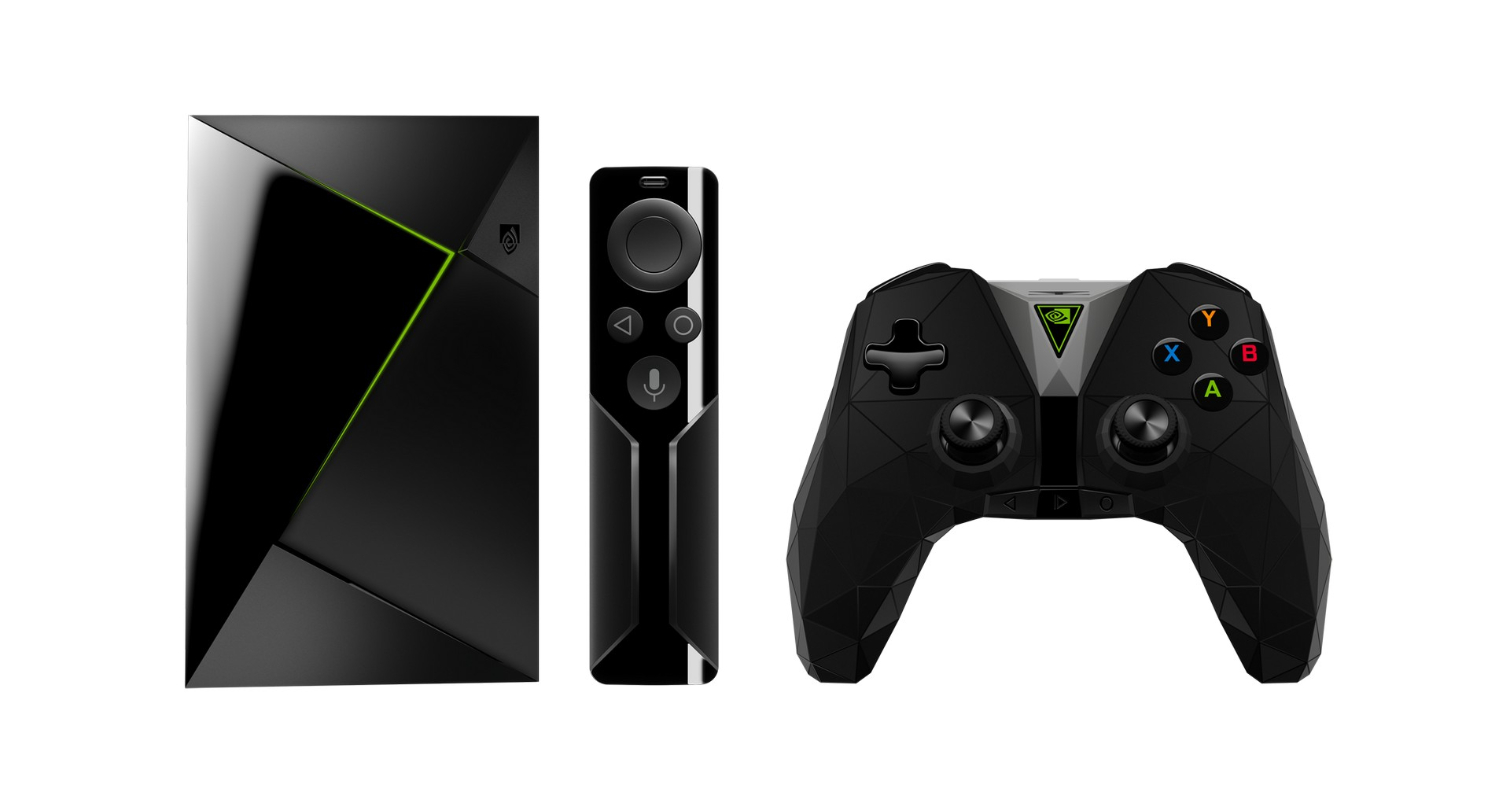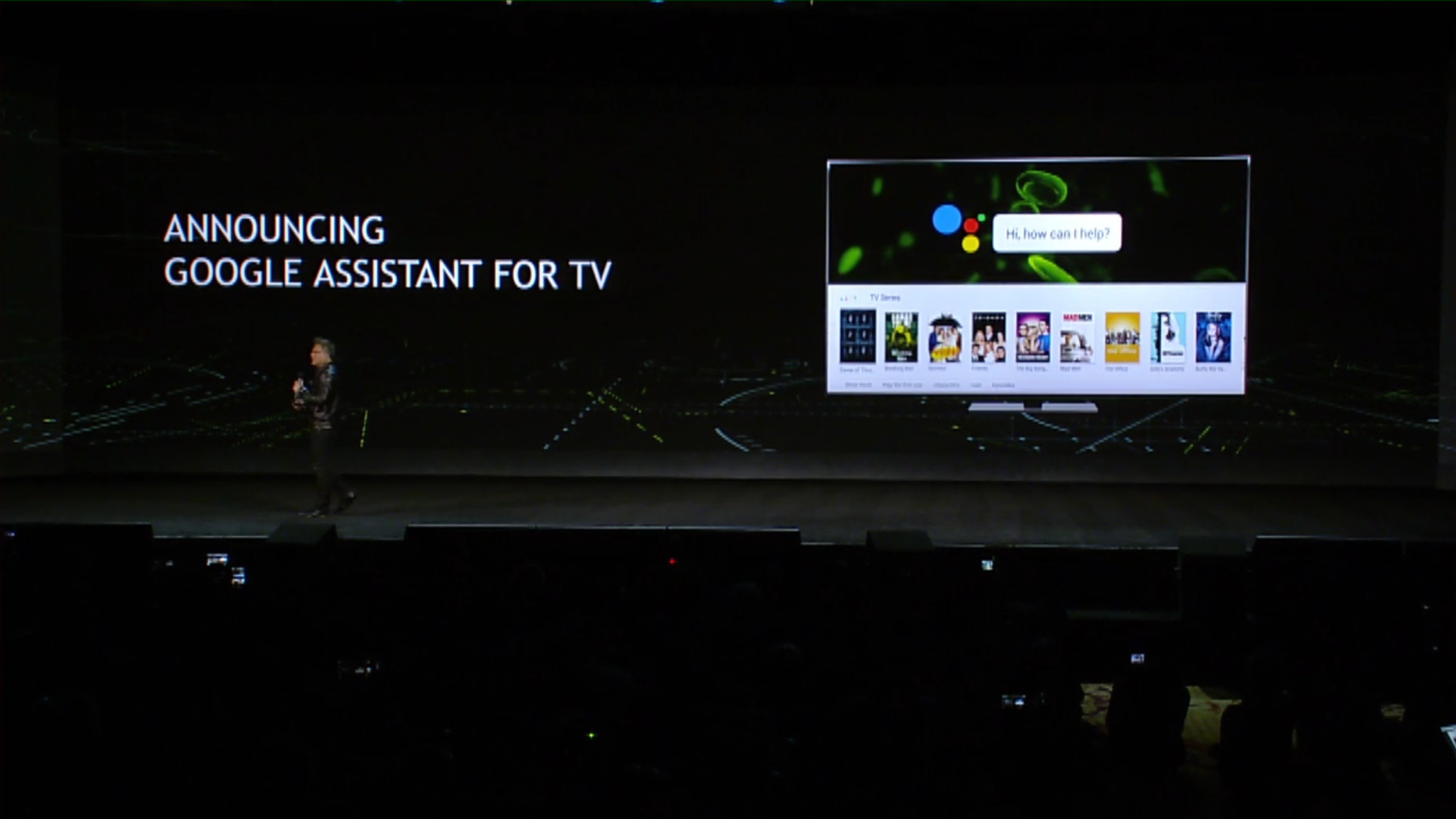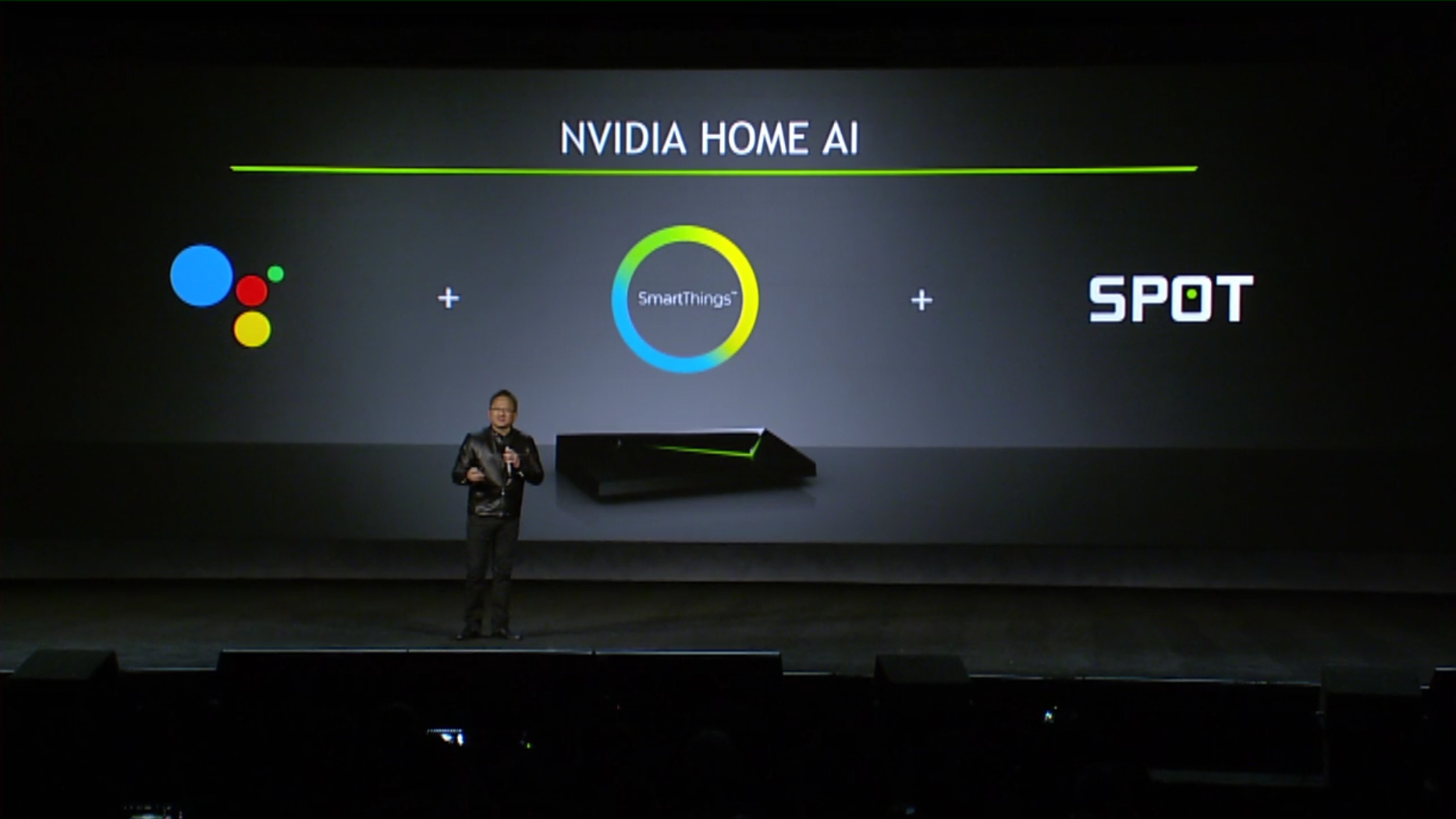Nvidia's New Shield TV Wants To Control Your Entire Home
Jen-Hsun Huang, Nvidia’s founder and CEO, revealed a surprising new Shield Android TV streaming device during his keynote speech at CES. The new Shield TV not only offers 4K HDR video streaming and a growing library of Shield compatible games, it also brings artificial intelligence into your home.
Nvidia’s latest Shield TV device is built on the company’s powerful and efficient Pascal architecture. Nvidia didn’t reveal detailed specifications about the processor inside the new Shield TV, but the company said that it's more powerful than any other Android TV streaming device on the market by a factor of three.
The increased performance of the new Shield TV enables it to deliver 4K HDR streaming video. Nvidia said the new shield is the first device to offer 4K HDR content from both Netflix and Amazon Video. The device can also access standard 4K streams from Netflix, YouTube, Google Play Movies, and VUDU. And in the coming months, YouTube’s TV app will launch on Shield TV, which will let you stream immersive 360-degree YouTube videos to your TV.
The library of available gaming content available on Shield is always growing. Huang said that Shield’s catalog of native content recently reached 1,000 titles, and it’s only getting bigger. The company revealed that The Witness, Tomb Raider, and Shadowgun Legends are the new three games that are coming to Shield. Nvidia also announced a partnership with Ubisoft that will bring the publisher’s catalog, including Watch Dogs 2, Assassin’s Creed Syndicate, and For Honor, to Nvidia’s GeForce Now streaming service.
The Shield TV also leverages Nvidia’s GameStream technology to stream games from your local gaming PC to your big screen TV. This feature isn’t new to Shield devices, but now you can game at much higher resolution. If your gaming PC is powerful enough to deliver smooth frame rates at 4K resolution, the new Shield TV device can stream 4K HDR games at up to 60 FPS.
AI: THE MACHINES ARE WATCHING US
The most surprising update for the new Shield TV is without a doubt the device's newfound AI capabilities. Nvidia worked with Google to integrate Google Assistant into the new Shield TV, which allows you to ask Shield TV to do things for you with voice commands. The concept is like the voice command options that Microsoft’s Xbox One allows, but Nvidia took its system to the next level.
Huang likened the Shield TV’s AI capabilities to Tony Stark’s J.A.R.V.I.S. AI assistant. The new Shield TV includes SmartThings Hub technology, which allows you to link a wide range of smart devices. Shield TV can effectively act as the central control system for an entire connected home controlled by voice commands.
Get Tom's Hardware's best news and in-depth reviews, straight to your inbox.
“We’re excited to be part of the new Shield TV, powered by the Android TV platform,” said Sascha Prueter, director of Android TV at Google. “When the Google Assistant comes to Android TV in the coming months, Shield users will be able to enjoy a hands-free Android TV experience through ‘OK Google’ voice commands.”
Listening From Everywhere
Nvidia’s new Shield TV can manage a smart home, but it requires your voice input to execute tasks, which means you must be within earshot of the device’s microphone. That’s fine if you want to dim the lights in the room that you keep your Shield TV, but if you want to listen to music in another room, saying “OK, Google” isn’t going to do you much good. That is, unless you have a microphone system elsewhere in your home.
Enter "Spot," Nvidia’s way to enable voice commands from anywhere in the home. Spot is a small microphone that plugs into a power outlet and communicates wirelessly with the Shield TV. The Shield device can sync with many Spot microphones so that you can have one (or more) in every room in the house.
Spot microphones are always listening and can pick up your voice from 20 feet away. With a Spot microphone in the room, Shield is always ready to do your bidding. [Editor's note: Until it becomes sentient and revolts.] Huang even said that if you have three or more Spot microphones in the same room, Shield’s AI can determine your position within the room.
Some may feel as though Nvidia’s AI assistant idea goes a little too far. In a post-Snowden world, where the idea of state-sponsored surveillance is an all-too-true reality, it’s a little disconcerting to think of placing an always-listening artificial intelligence in one's home.
If the idea of having your own personal J.A.R.V.I.S. outweighs to potential Orwellian ramifications of having such a device in your home, you can pre-order one now. Nvidia is asking $200 for the base Shield TV device, which it intends to ship to customers later this month. The Spot AI microphone will be available later this year for $50.
Kevin Carbotte is a contributing writer for Tom's Hardware who primarily covers VR and AR hardware. He has been writing for us for more than four years.
-
NewbatLife I thought it was still based on Maxwell? From what I have been able to gather, this is the exact same internals as the 2015 version. Even that the 2015 will get most, if not all, the same features minus those that require the updated remotes, which hopefully you can buy separately.Reply -
Billy_66 A new shield tv? ... how about they fix the one out now? Just about every app crashes randomly ... and often.Reply -
Archer75 The old shield also does HDR. And it's getting the exact same software on January 16th.Reply
The only difference is the new model is smaller, loses an SD card slot, the controller has an always on mic and the remote isn't rechargeable. -
sillynilly I'm an Nividia fanboy - proud of it - I like it. See spot run in my house (I never was into Amazon's option). Price is right and is what I am looking for from a company I trust - your opinion may differ - that's great, but this seems really cool to me. I'm onboard as an early adopter Nvidia.Reply -
loki1944 Reply19119030 said:The old shield also does HDR. And it's getting the exact same software on January 16th.
The only difference is the new model is smaller, loses an SD card slot, the controller has an always on mic and the remote isn't rechargeable.
That sounds worse?
